August, 2023: Elukuto Community Spring Protection Complete!
Elukuto Community now has access to clean water! Thanks to your donation, we transformed their spring into a flowing source of naturally filtered water. We also installed a chlorine dispenser to provide added protection and trained the community on improved sanitation and hygiene practices. Together, these components will unlock the opportunity for community members to live better, healthier lives.
"I remember sometime back, one of our neighbor's young children severely slipped and injured herself on the staircase. [It] was so bad the child had to be hospitalized for months, and the rest of us mothers became scared, including me. I banned my grandchild from coming to the spring, but now look how the little ones can easily climb up and down the staircase. Now she can help me with the early morning and evenings when she's back from school," said 47-year-old farmer Salome Nanzala.

Salome collecting water.
"This water point has come with more profit. Being the wife of a brickmaker, we do make our bricks right here from home. My children, grandchildren, and I have the responsibility of going to get water. Doing rounds to the spring is much easier. In brick making [the] availability of water means more bricks [and] that means more profit for the family," Salome said.
Children were just as excited as adults about the new water point.
"During the heavy rainy season, there was an opening at the top of the spring where rainwater mixed with the spring water making the water dirty. I had to boil drinking water. I will no longer have to boil water now. And [since] I have been given the responsibility to look after my grandmother during the dry seasons, drinking water is not [going to be] a challenge," shared 14-year-old Emma M.

Emma with her best friend at the spring.
"Now that I can get water anytime, I can use the extra evening hours doing laundry of my uniform," concluded Emma.
Preparing for Spring Protection
Community members worked together to source and carry all locally available construction materials to the spring. These included bricks, sand, stones, and fencing poles. Some people also chiseled away at large rocks to break them into gravel. Because people have to carry most items by hand, the material-collection process can take anywhere from a few weeks to months.
When the community was ready, we sent a truck to deliver the remaining construction materials, including cement, plastic tarps, and hardware. Then, our construction artisan and field officers deployed to the spring to begin work. Individual households provided meals throughout each day to sustain the work team.
From Open Source to Protected Spring: A Step-by-Step Process
First, we cleared and excavated the spring area. Next, we dug a drainage channel below the spring and several runoff diversion channels above and around the spring. These help to divert surface contaminants away.
To ensure community members could still access water throughout the construction process, we also dug temporary channels around the construction site from the spring's eye. This allowed water to flow without disrupting community members' tasks or the construction work. Excavation created space for setting the spring's foundation, made of thick plastic, wire mesh, concrete, and waterproof cement.
After establishing the base, we started brickwork to build the headwall, wing walls, and stairs. Once the walls had grown tall enough, we began one of the most crucial steps: setting the discharge pipe. The discharge pipe needs to be positioned low enough in the headwall so the water level never rises above the spring's eye, yet high enough to allow room for the average jerrycan (a 20-liter container) to sit beneath the pipe without making contact, which prevents cross-contamination.

If we place the discharge pipe too high above the spring's eye, back pressure could force water to emerge elsewhere. Too low, and community members would not be able to access the water easily. We embedded the pipe using clay (or mortar when the clay is in short supply) and placed it at an incline to ensure water flows in the right direction.
In coordination with brickwork, we pitched stones on both sides of the spring's drainage channel. We then cemented and plastered each stone, forming the rub walls. These walls discourage people and animals from standing in that area, which could cause soil erosion and a clogged drainage area.
We then cemented and plastered both sides of the headwall and wing walls. These finishing layers reinforce the brickwork and prevent water in the reservoir from seeping through the walls. In turn, enough pressure builds in the reservoir box to push water out through the discharge pipe.

As the headwall and wing walls cured, we cemented and plastered the stairs and installed four tiles beneath the discharge pipe. The tiles protect the concrete from the falling water's erosive force while beautifying the spring and facilitating easy cleaning of the spring floor.
The final stage of construction is backfilling the reservoir box behind the discharge pipe. We cleared the collection box of any debris that may have fallen during construction. Then we redirected the temporary diversion channels back into the reservoir box, channeling water into this area for the first time. We close all other exits to force water through only the discharge pipe.
We filled the reservoir area with the large, clean stones community members had gathered, arranging them in layers like a well-fitting puzzle. We covered the rocks with thick plastic to minimize potential contamination sources, then piled enough dirt on top to compensate for future settling.
Community members transplanted grass onto the backfilled soil to help prevent erosion. The collection area was fenced to discourage any person or animal from walking on it. Compaction can lead to disturbances in the backfill layers and potentially compromise water quality.

The construction process took about two weeks of work and patience to allow the cement and plaster to finish curing. As soon as the spring was ready, people got the okay from their local field officers to fetch water.
We officially handed over the spring to mark the community's ownership of the water point. Happiness, thanksgiving, and appreciation were the order of the day, flowing in all directions.
"The chairperson leading the [way] greatly showed his gratitude and thanks. With a word of prayer, we handed over the spring to the community," said field officer David Muthama.

The completed spring!
Training on Health, Hygiene, and More
Together with the community, we found their preferred date for training while considering other community calendar events, such as the agricultural season and social events. We requested a representative group of community members to attend training and relay the information learned to the rest of their families and friends.
When the day arrived, facilitators David, Joyce, Joy, and four interns deployed to the site to lead the event. 21 people attended the training, including 19 women and two men. We held the training near the spring.
We covered several topics, including community participation in the project; leadership and governance; personal, dental, and environmental hygiene; water handling and treatment; spring maintenance; the importance of primary health care and disease prevention; family planning; soapmaking; how to make and use handwashing stations; and the ten steps of handwashing.

Learning about proper dental hygiene.
During the leadership and governance session, we held an election for the newly formed water user committee leaders, who will oversee the maintenance of the spring. We also brainstormed income-generating activities. Community members can now start a group savings account for any future minor repairs to the spring and a cooperative lending group, enabling them to develop small businesses.
"The most memorable topic was personal hygiene. One of the interns was given an opportunity to teach the community, and she decided to have a talk with the female attendees where she challenged them to tell how they managed their monthly time. It was noted some members were not handling it properly. What made this topic memorable was the profound impact it had on breaking down a long-standing taboo and promoting gender equality within the community [particularly among] some members who are of Muslim descent by acknowledging the importance of discussing menstrual health and emphasizing that menstruation is a natural and healthy bodily process," said David.

Learning about proper hand washing.
"They shared information about the menstrual cycle, proper menstrual hygiene practices, and the importance of using clean water and sanitation facilities during menstruation. This topic was often neglected or considered taboo in the community, leading to misinformation and shame surrounding menstruation," David concluded.
"The training has brought about a sense of seriousness, and everyone has seen the project is no joke. Being the chairperson, this is going to be of positive help during my leadership. I can always refer to the training of how we were taught if I find anyone doing the opposite of what is expected. With the knowledge given, I will be able to set up structures to help me in maintaining the drainage system and maintaining [the] cleanliness of the spring," said 52-year-old brickmaker and chairperson of the water user committee Tom Okwara.

Tom Okwara at the spring.
Conclusion
This project required a substantial collaboration between our staff, our in-country teams, and the community members. When an issue arises concerning the spring, the water user committee is equipped with the necessary skills to rectify the problem and ensure the water point works appropriately and there is guaranteed public access in the future. However, if the issue is beyond their capabilities, they can contact their local field officers to assist them.
Also, we will continue to offer them unmatchable support as a part of our monitoring and maintenance program. We walk with each community, problem-solving together when facing functionality, seasonality, or water quality challenges. Together, all these components help us strive for enduring access to reliable, clean, and safe water for this community.
With your contribution, one more piece has been added to a large puzzle of water projects. In Kenya, Uganda, and Sierra Leone, we're working toward complete coverage. That means reliable, maintained water sources within a 30-minute round trip for each community, household, school, and health center. With this in mind, search through our upcoming projects to see which community you can help next!
Thank you for making all of this possible!

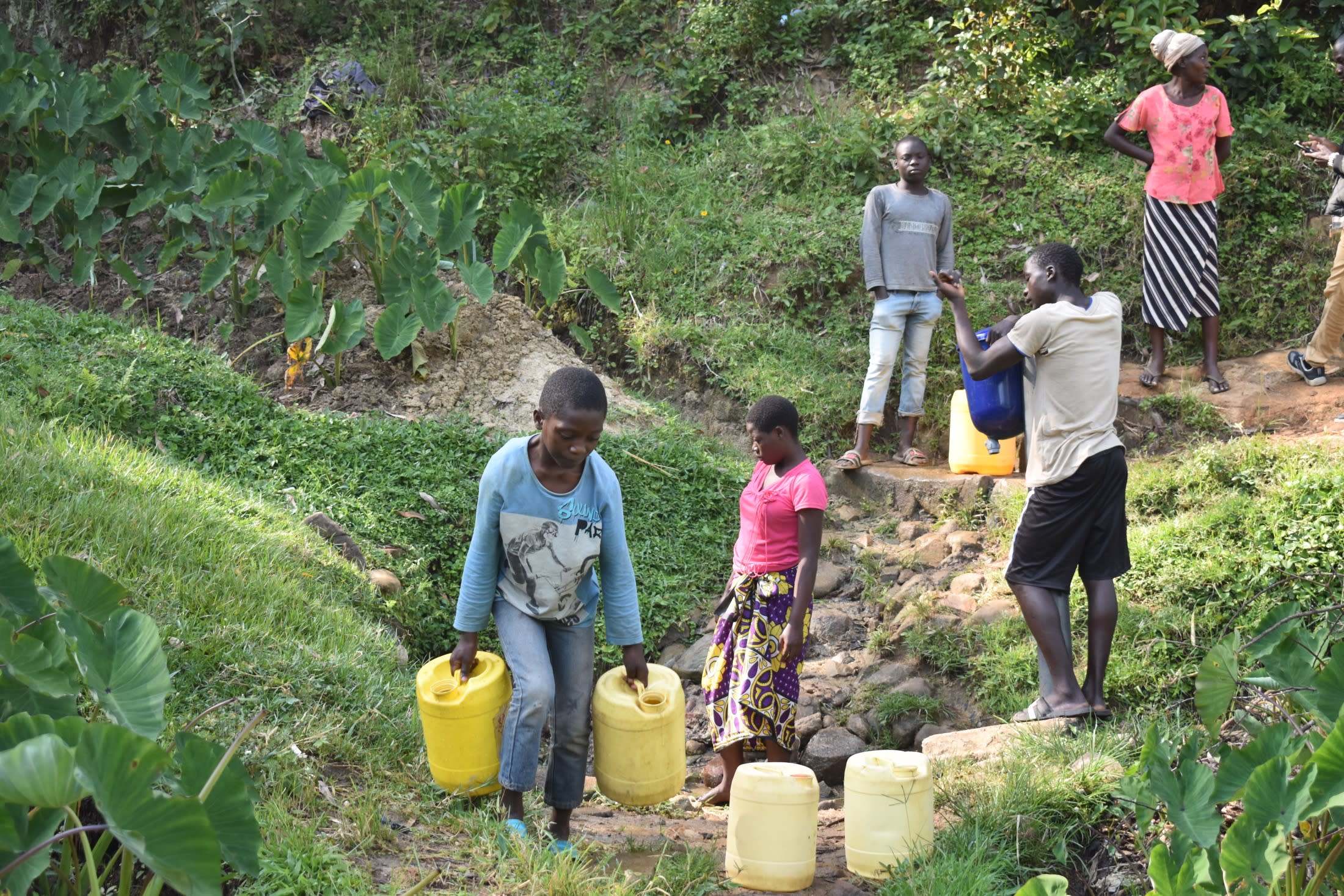
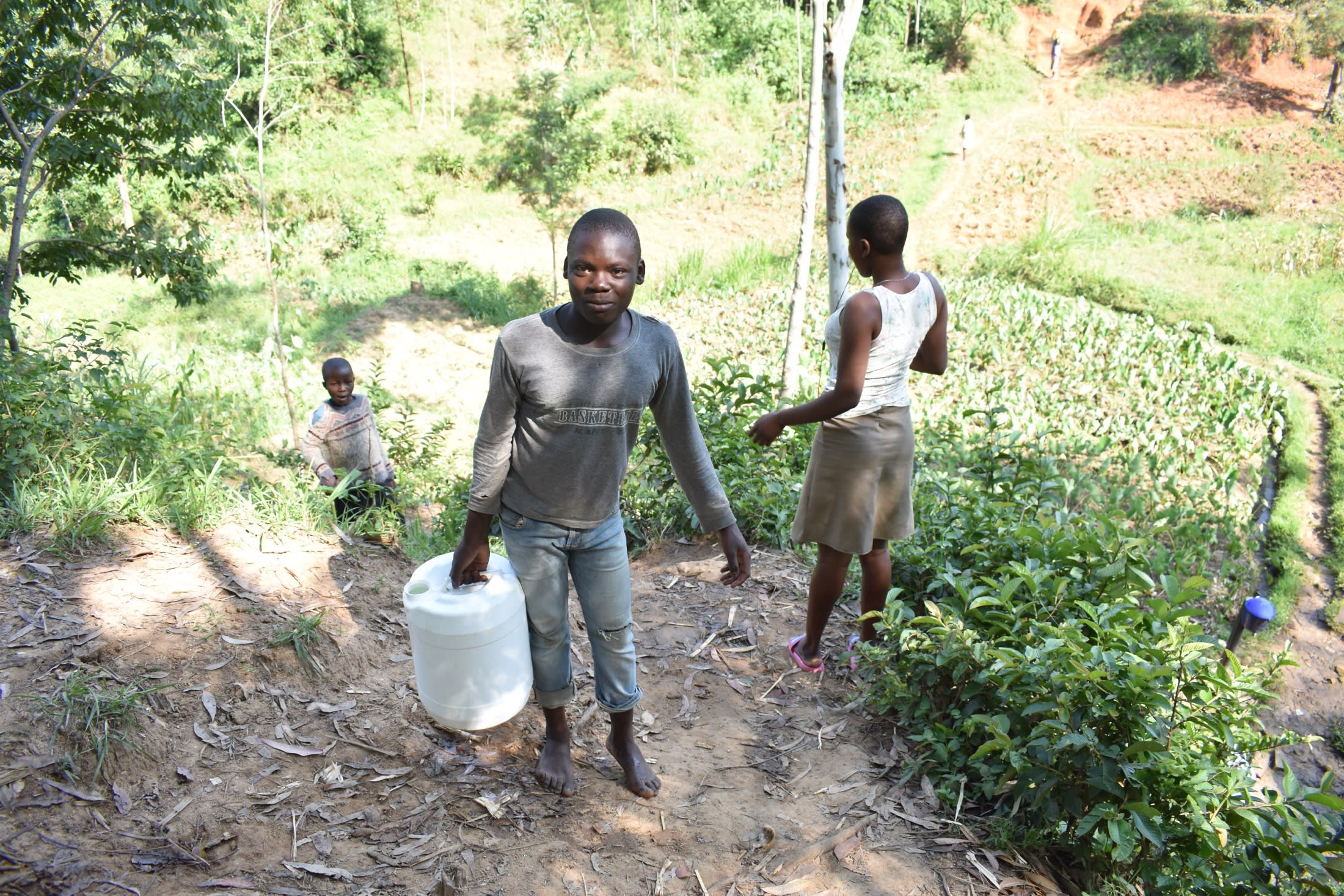
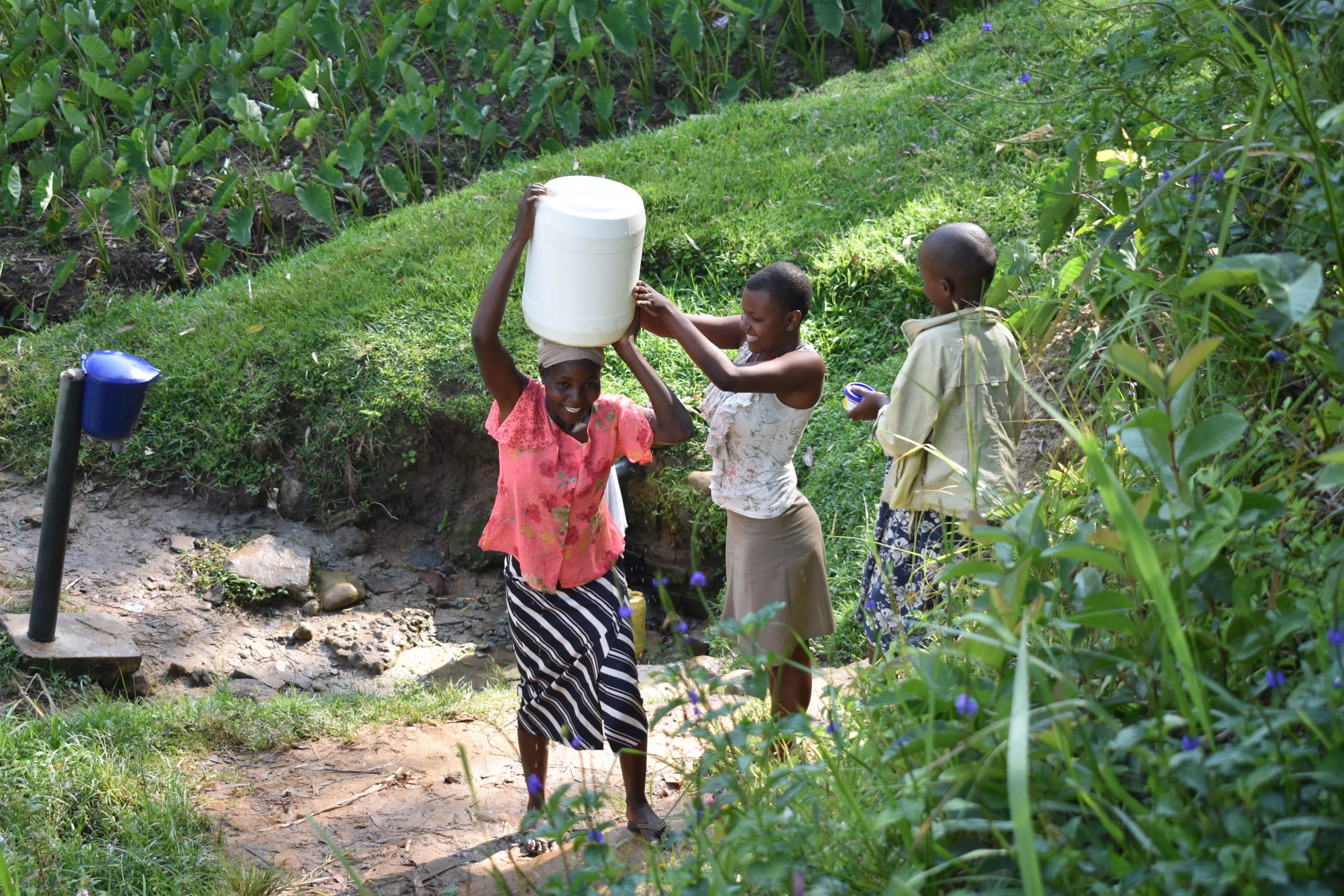
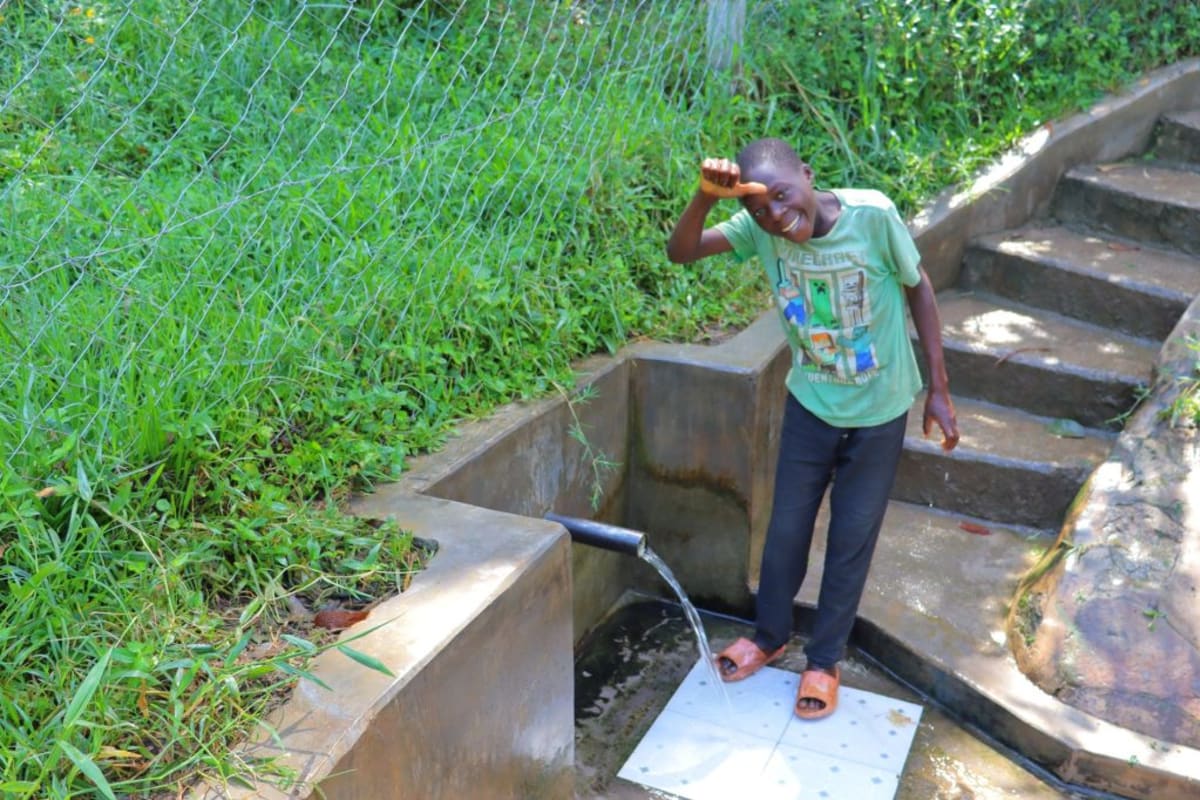
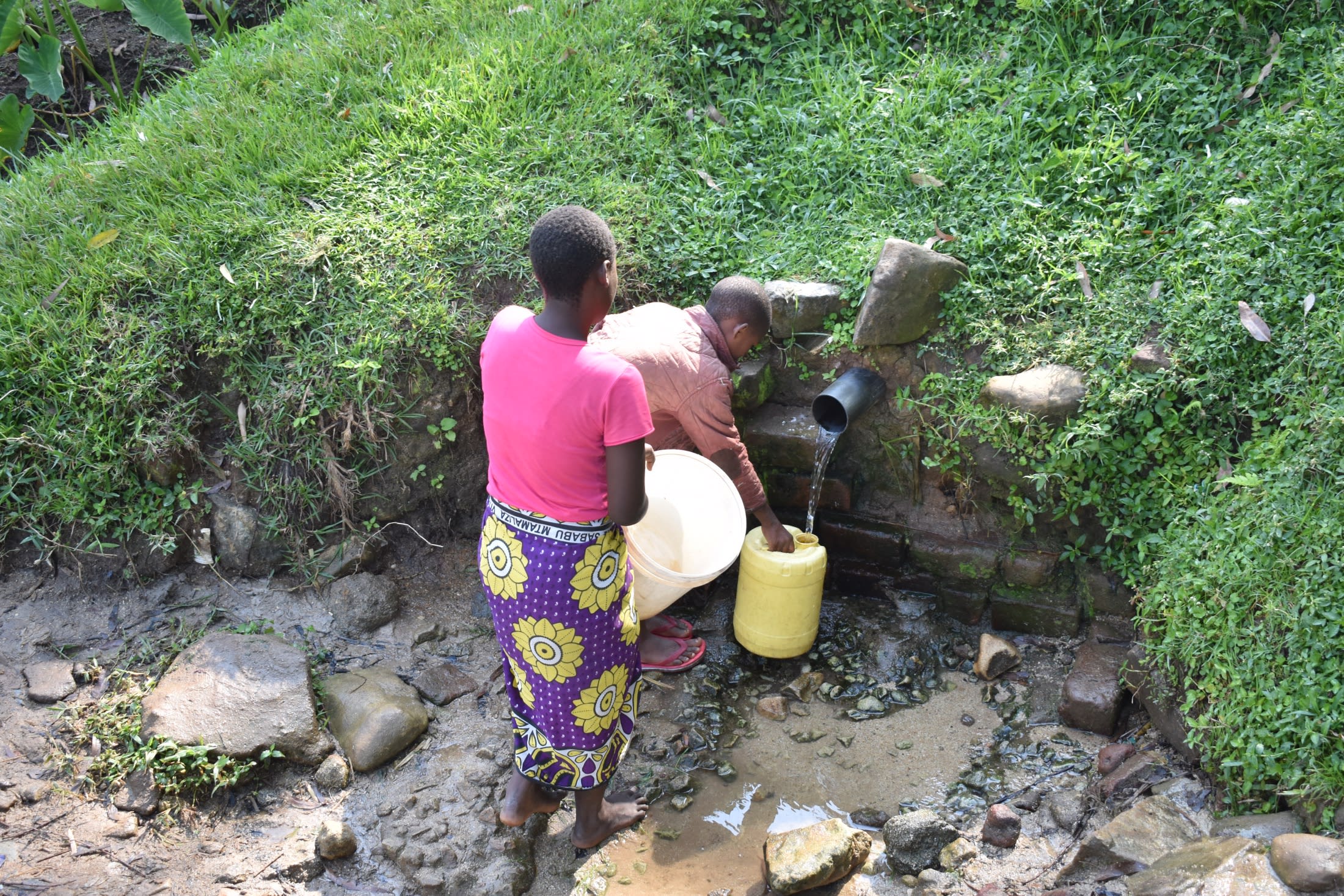

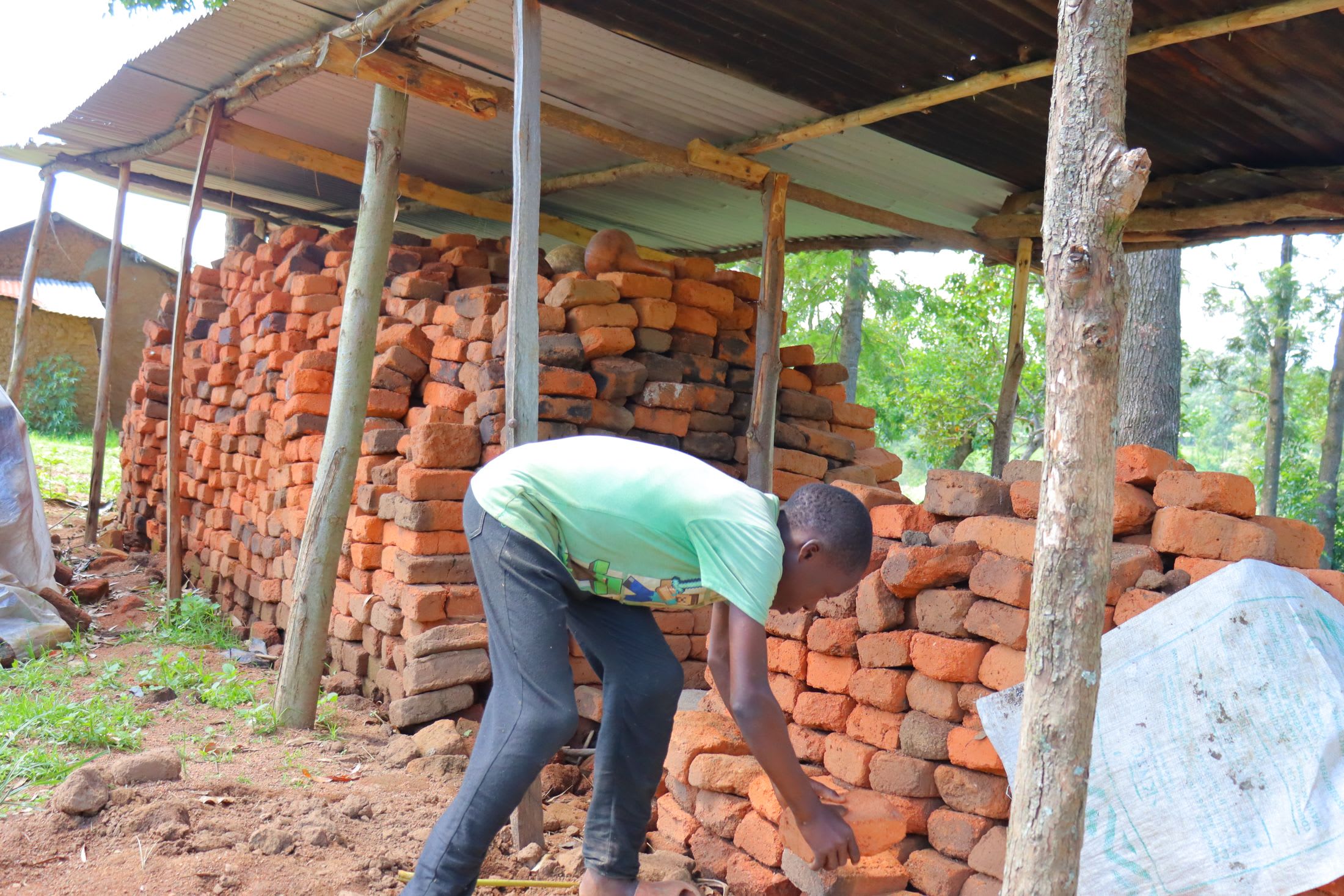

 Protected Spring
Protected Spring
 Rehabilitation Project
Rehabilitation Project





























